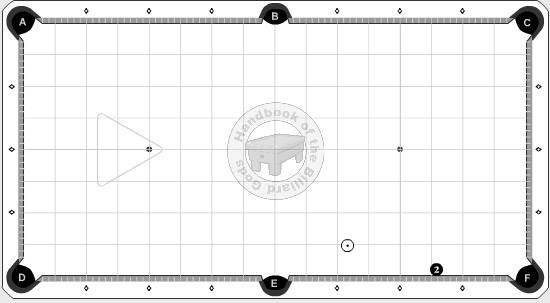This is today’s bit of advice from the book Safety Toolbox.
The mechanical bridge is usually kept underneath the table. It is a little funny-shaped tool attached to the end of a long stick. It is also known as the rake, granny, crutch, ladies aid, sissy stick, etc. It is designed to play a shot that is out of reach of normal stance positions.
Many people treat the use of the mechanical bridge as if it were coated with poison ivy. Apparently they have a morbid fear, a personal lack of confidence, or perhaps an unstable mental attitude. (Make sure this is not a description of you.)
When any opponent displays awkwardness in using a bridge, he has handed you an opportunity to use this against him. Give him lots of chances. Don’t expect failure, but do expect him to be uncomfortable.
There are two factors that benefit you when making him use a mechanical bridge. The first is that he has to use an unfamiliar tool. There are many instances where even a simple shot was screwed up. It also interrupts his game flow. Getting the bridge out, setting it up, and replacing it when done are extra activities that interfere with the playing processes.
Shorter players must use the bridge more often. A tall opponent can reach more of the table. When setting up this safety, ensure that the cue ball is about a diamond beyond normal reach. Some players try to stretch out for the shot. That also works because the reduced stability causes significant loss of control.
Few players take the time to master the bridge. You simply don’t see people in pool halls pulling out the mechanical bridge except in desperate circumstances. Many select a shot with lower chances of success, just to avoid using it. If you watch snooker games, the players are experts, constantly using up to three different lengths of the mechanical bridge. During practice sessions, devote about 10 minutes to shooting shots only with the mechanical bridge. A few thousand practice shots over a couple of months give you an unusual expertise.
By itself, forcing its use probably does not seem threatening. When included with another safety type, such as bad angle, it becomes tougher. It is just another opportunity to add psychological pressure.
The key to success is based on your opponent’s lack of familiarity. Review the examples below to see just how easy these are to set up. Even a tall player has trouble with these.
Bridge-required, example 1
To validate the difficulty of these shots, try them yourself.

Bridge-required safety, example 1
Bridge-required, example 2
Few players can shoot both right-handed and left-handed. Be aware of this when setting up ball positions.

Bridge-required safety, example 2
Buy the book – Help your opponent lose!!
| Get the Book!! (Includes my Money-back Guarantee) |






